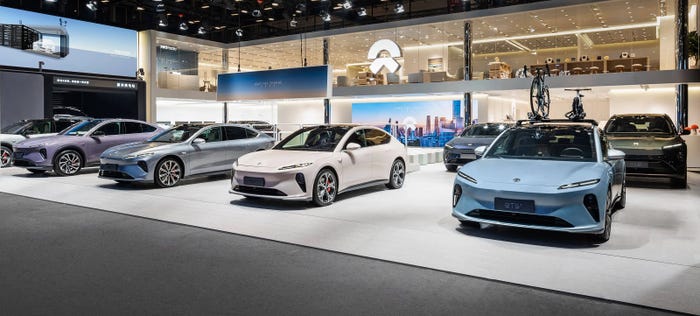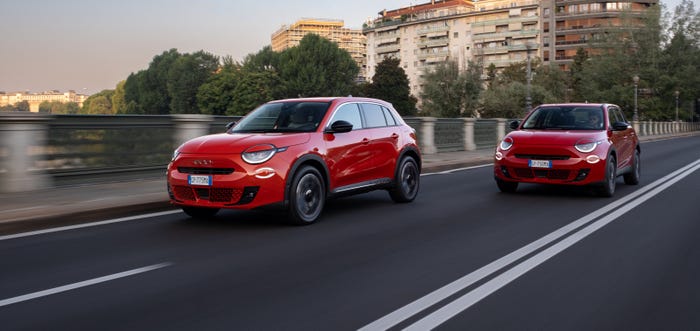Toyota C-HR Adds PHEV to Full Electrified European Lineup
Plug-in hybrid version of the midsize SUV is focused on electric drive range for the typical urban commuter.

Toyota now offers a full European lineup of electrified powertrains for its new C-HR midsize SUV with the introduction of a plug-in hybrid version.
The 2.0L Toyota C-HR Plug-in joins the recently launched 1.8L and 2.0L self-charging hybrid-electric models in the lineup. All employ the automaker’s fifth-generation hybrid technology that claims lower CO2 emissions than even modern diesel powertrains.
Targeting European urban clean-air zones, the new PHEV claims a pure-electric driving range of 41 miles (65 km) on the WLTP rating, exceeding the average commuter’s daily commuting journey.
The PHEV powertrain combines a 163-hp electric motor on the front axle, with energy stored in a 13.6kWh lithium-ion battery, alongside a 2.0L engine boasting 152 hp to deliver a total system power of 223 hp and claiming a 0-62 mph (100 km/h) acceleration time of 7.4 seconds.
Meanwhile, it claims a WLTP combined cycle fuel consumption of 353 mpg (294 mpg US) and CO2 emissions from 19 g/km. The automaker says a clutchless dual-motor system helps reduce friction and wear, allowing the Toyota C-HR Plug-in to consume less fuel when running in hybrid-electric mode compared to most competitor PHEVs.
The car has a 6.6kW onboard charger which allows the battery to be charged from flat to 100% in less than two-and-a-half hours using the optional tri-phase cable and a wallbox power supply. A Mode 2 charging cable is supplied as standard for charging using a domestic electricity supply.
Europe Focused
The Toyota C-HR Plug-in has been tuned to suit European tastes, using real-time data from drivers across the continent. For example, accelerator pedal input sensitivity has been recalibrated for easy control and rapid response.
It claims enhanced driving dynamics thanks to the higher torsional rigidity and reduced vehicle mass provided by the car’s Toyota New Generation Architecture. It also is the first Toyota vehicle worldwide to feature ZF frequency-sensitive control to enhance handling and ride comfort. The hydromechanical system increases damping force at low frequencies to gain superior body control, in roll and pitch, and during cornering. At high frequency, damping is reduced to improve ride comfort.
The car has a 0.318 drag coefficient, achieved through aerodynamic details to reduce the car’s frontal area and refine the body shape, including the underbody, to improve airflow.
The MyToyota app can be used to start and stop charging remotely when the vehicle is plugged in. The app shows live progress during charging and the car’s electric driving range. The owner can create a schedule using the app, so the battery can be recharged at the most appropriate time, for example overnight to take advantage of lower energy rates.
About the Author(s)
You May Also Like





